Starsector (formerly “Starfarer”) is a new open-world single-player space-combat, roleplaying, exploration, and economic game. In the vein of old games like Freelancer in 2000 or a combination of titles like Eve and Stellaris, Starsector has you traverse a large collection of planets, asteroid belts and communities. Set up as more of a “do what you want” kind of game, you are free to stay as a bounty hunter, make your own settlements or become a trader akin to other games like Kenshi.
Starsector doesn’t start off grand or explosive, instead allowing you several helpful tutorials, some basic combat scenarios and then finally some open-world goodness. You can choose different starting points for your main game, with an easy to get into a tutorial portion of reactivating a warp gate to help traversal between systems. The ride is smooth, but after completing the introduction it can be a bit daunting with all the options at hand.
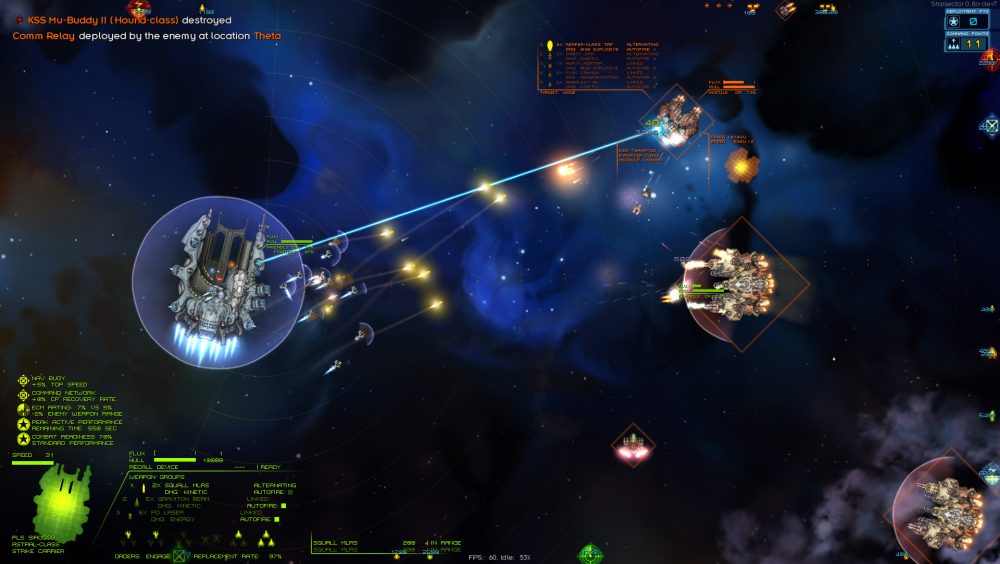
Similar to games like RimWorld or Factorio, Starsector is all about improving yourself as well as the things you own. With only small glimpses of an end-game or finale, you will go about levelling up your commanders, upgrading your fleet of ships and making your supply lines the most profitable. Easily landing in the pile of “just another hour” titles, Starsector will either grip you after the first few hours or push you away at the sheer openness.
As you play through the open world of Starsector you will be greeted with several mechanics all at once, just like many other open games. Plopped somewhere in space, you will have a small fleet to your name of varying ship classes. If you follow the introduction you will be introduced to basic mission structure, from being contacted via comms to then reaching the planet to talk face to face. Movement is done on a top-down 2D view of space, condensing the 3D movement of other space games into a neat journey.
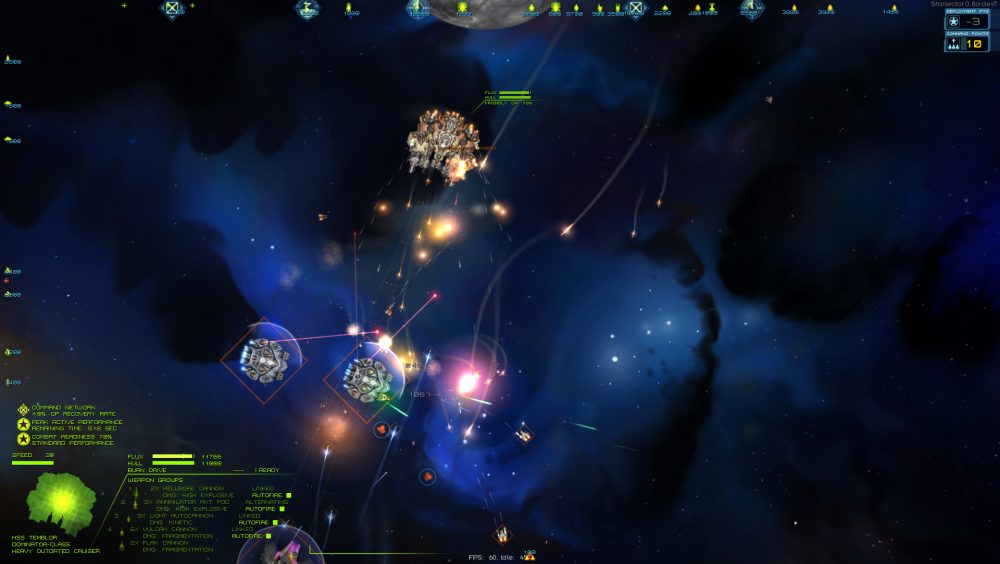
Piloting the ship is simple, click on the map and go, you can also change the speeds at which you move and even go into burn modes to go faster at a risk of being detected easier. You may also go slower and go dark to make it harder for your fleet to be detected. Both forms of movement are useful for evading ships or reaching a destination quicker, as well as covert ops to infiltrate bases or activate devices in enemy territory.
Alongside movement you have a plethora of other actions during traversal, from scanning the local area for ships and debris, harvesting debris fields, sending out distress calls and jumping to new systems. When coming into contact with planets you can talk with the local populace, quest givers as well as commence in jolly commerce.
On the flip side, if your ship comes into contact with other ships you will enter into a new viewing mode, the combat map. Starting off you will have a tactical view of the battle map, reminding me of Mount & Blade: Warband, selecting what ships to deploy into combat and then moving them into attack formations. Ships will automatically attack if you’re not controlling them, but with your mothership you can assume direct control. Ships have an array of weapons from normal sci-fi laser weapons, missiles and flak.
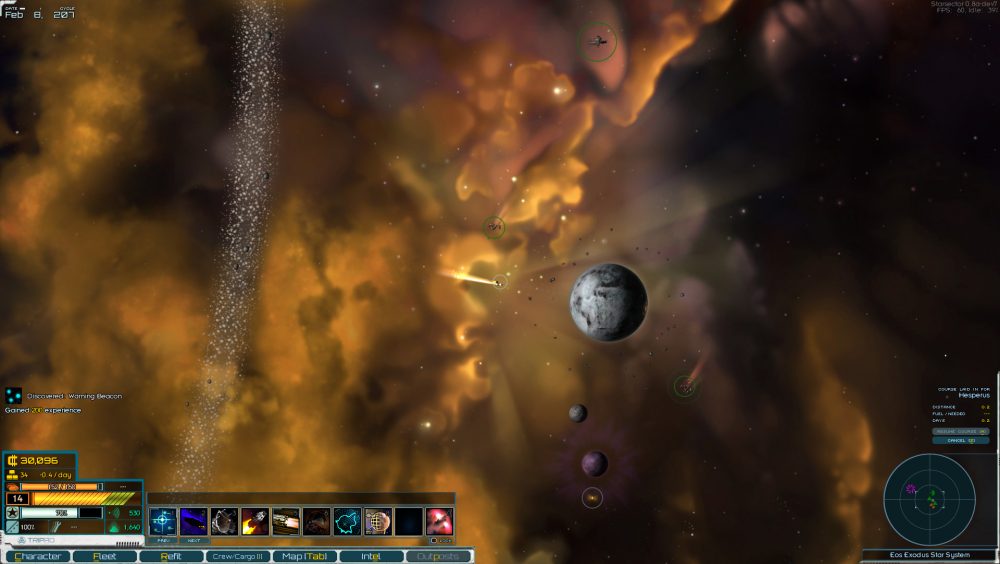
When it comes to combat, just like the main game, there are several mechanics at play which again can feel daunting. You have flux, which is essentially a heat meter that increases when your shields are hit or when you use weaponry and then hull which is your hit points. Different weapons deal more damage to flux or hull, some also having other uses like shooting down missiles. Combat can take quite a bit of time to get used to, especially the larger confrontations that require more micromanagement to tackle waypoints, scouts and motherships.
Settling planets is also an in-depth manner, with a system similar to Stellaris in some ways. You need to make sure it gets enough food, create new buildings on the planet and even set up supply lines and shops. Those wanting a static income should invest in a few planets here or there, especially since it makes trading a bit easier when you can cut out the middle man and make the products for selling on your own.
As you survive, complete missions and earn income you will gain experience, levelling up yourself and your commanders. With a relatively straightforward skill system, you can increase the effectiveness of your ships in combat, traversal and trading, or just your ability at getting good prices and gear.
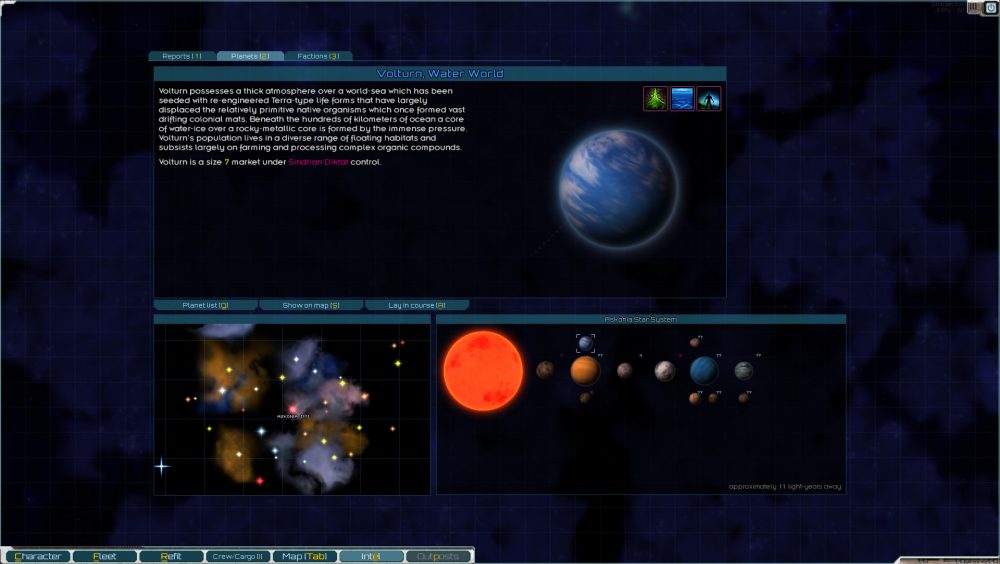
The music of Starsector is very fitting if a bit dull at times. With low drums, some synth tunes and cymbals your exploration of deep space is full of sci-fi tones. The soundtrack lacks some energy at points, or have short loops for inconsequential planet visits, which does let the overall soundscape down a bit. A lot of combat is also an empty void only filled with explosions and gunfire, fitting to the “no one hears you scream in space” thematic but off-putting when you move from traversal or menu music to a silent battle map.
Overall Starsector is on the right tracks to land neatly in the never-ending game pile, spending hours upon hours in the wide-open reaches of the abyss. Due to the setup of the game, it still has a risk of putting people off with a lack of direction, though I doubt that can ever be quelled unless a full story was implemented. If you’re a fan of open games like any of the previously mentioned ones I highly suggest giving Starsector a look.
System requirements:
- OS: Windows, Mac (OS X 10.7 or higher), or Linux
- Memory: 3GB system RAM
- Graphics: Minimum 1280×768 resolution, 512 MB video memory
- Processor: Hard to say exactly, but nothing fancy
You can pre-order Satrsector here https://fractalsoftworks.com/preorder/
Did you enjoy reading our preview of a game before the game gets its final release and its final version? if yes, click here to find more early previews.

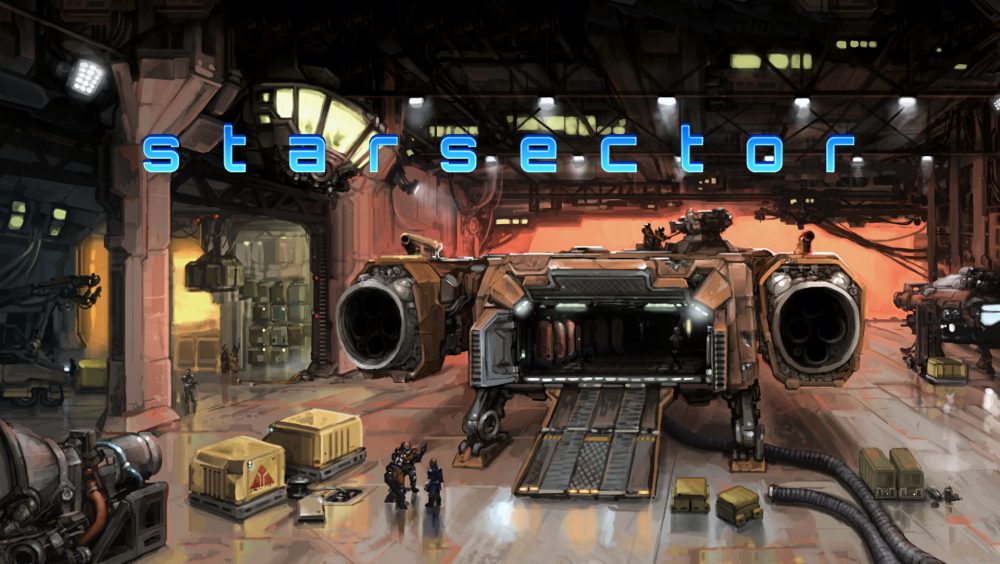






You must be logged in to post a comment.